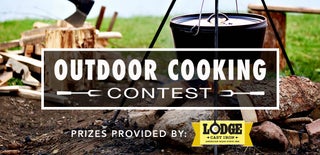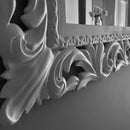Introduction: Reverse Flow Offset Smoker From an Old Water Boiler
All that work to cook 2 sausages ???
These were my wife's words after about two months of work,
"... I did not build it to bake sausages, but to cook low and slow !!!" I replied, but did not appreciate it as a response, I understand it very well...
Like so many of my buildings, everything was born by chance
I was accompanying my daughter to the kindergarten and in the yard I saw a water boiler they had replaced recently. At that time I was not looking at a boiler but in my head a big bbq was materializing...
I certainly did not miss the opportunity, I went to the teacher asking if I could take him away, so in the evening he was already in my lab ready for a second life. For those who do not know me yet among the many things I love the barbecue and the story I'm about to tell you it shows.
please apologize for my inaccurate English
Step 1: The Project
After taking all the measurements I designed with Rhino the structure based on the pieces I had in the garage trying to buy (as always) less possible things ;-)
First of all I had to do a mini project to define at least the main measures.
I modeled the design with Rhino and quoted
Step 2: Cleaning the Boiler
The first thing I needed to do was remove all the rust and close the holes that had formed.
With chisel and hammer I removed everything I could, then I removed the paint on the outside with grinder and so much (but really so much and so much) patience.
In 4 hours I was able to polish it and despite having had a mask and goggles I spit iron for a whole day. The rusty part did not really clean it up.
Step 3: The Cutting of the Boiler and Internal Sanding
Following my 3D project, I made the cut line for the door and the plasma torch (which I bought for the occasion) with the adhesive tape in 2 minutes, a clean and perfect cut.
Before completing all the cut of the door, I preferred to weld the hinges immediately so that I have the maximum alignment, I drew the hinges in .dxf and made them cut the iron with 6 pieces of iron.
A few welding points to stop the hinges, then I finished cutting the door by helping with a curved wood guide that embraced the boiler on which I then slid the plasma torch.
I had to resume the hard removal of the paint ... The paint inside is much harder and more resistant than the outside, so I decide to use a chemical and after several hours even a scratch, the paint has not altered in the least then I try with the grinder but in 20 min I had about eliminating a few square centimeters consumed half abrasive disc ... mmm i was not very happy...
So I decide to use the strong methods, I bring the boiler to a sandblasting company that has cleaned me both inside and out with only 30 euros and the result is amazing.
Step 4: The Oven
Now is the time to build the oven, I go to the blacksmith to cut the walls of 3mm thick.
Assembling the oven was very fast and fun.
To control the power of fire I had to make an adjustable guillotine from the outside of the oven.
On one side of the oven I have an adjustable rectangular hole for the control of incoming air.
Step 5: Bearing Structure
I have recycled advanced 40x40 tubes after building my Raptor CNC and not having the right length I had to join them to make them longer then I assembled the stand on which the oven will rest.
I made a wooden footprint for the left foot, which will have the task of embracing the boiler and support it.
To frame the chassis I measured the diagonals and apply some welding point to block the pieces.
I complete all the cords welding in the opposite direction to minimize deformations and finally join the two frames to form a L.
Finally I made it a single block by welding the oven to the stand, the boiler and the boiler support base.
For the oven door I bought in the shop of welding hinges
Step 6: The Chimneys
It is time to mount the chimneys that will be placed on the same side of the oven.
Unfortunately, while I was cutting I burned the plasma torch I had to send it in repair: - (((so I had to cut with the iron saw to do the holes.
To install the fumes, I needed collars to be welded to the chassis on which they would then fit the bent curves and the steel tubes.
My little Fervi lathe does not have a spindle so large that it can hold 120mm tubes so I had to turn to the turner who prepared these below.
Step 7: Make It Transportable
Without the wheels it will be impossible to move it...
I have found on ebay 2 pneumatic wheels at 5 euros one and I have to say that they are also well done.
I calendered two pieces of sheet metal to make the covers because they are collocated just under the hot oven and are of rubber.
To mount the wheels on the frame, I drilled two pieces of pipe on which I would insert a 20 mm hub.
Step 8: The Reverse Flow System
Inside the boiler, you need to create a horizontal divide to channel the smoke from the opposite side of the boiler and then bring it back to the grill and finally get out of the fumes, this technique in the world of barbecues is known as Reverse Flow.
I did not want to make a fixed division because if I needed to inspect or change the offset inside the boiler I would have been in trouble so I decided to make a removable partition by welding the supports on which to support 3 sheets of sheet metal from 3 mm.
The part that is above the furnace mouth completely closes it with the sheet metal and to have a precise contour covering the bend curve of a boiler on a piece of wood.
With 3 pieces of cut-to-size sheet metal create the smoke partition.
This partition allows to create a kind of oven and to obtain a homogenous temperature inside the cooking chamber.
Always inside i have mount the bracket guides for 20x20 mm square tubular surplus pieces, place them at the right height and secure them to the chassis.
The guide for the grid is a 20 mm wound plate welded on the tubular 20x20 mm
In order not to miss anything I install 2 guides 10 cm higher, you never know that I needed to grill so much meat .... For now start with only one 90x50 cm grill.
Step 9: The Cooking Grill
I bought on ebay (29 euro) a stainless steel grid I riveted to a iron frame
Step 10: Indispensable Accessories
When cooking there is always a space problem (you never know where to put things) so I decide to also mount folding shelves that are always useful when you are around the grill because I do not like leaving things on the ground, I build a front and a side plan.
To make tilting plans I must weld the supports to the boiler on which the shelves will rotate.
The shelf structure is now tilting, then I'll set wooden pieces of wood to give it a more rustic touch.
On the opposite side of the oven I do the same thing by getting a nice long shelf.
To support the shelves I install a flag or a 20x3mm flat cut and perforated plate to keep them in bubble.
Always with tubular leftovers and flat bars the handle on which I am going to mount a rustic oak wood cover.
Two thermostats at the ends of the lid will allow me to monitor the internal temperature of the cooking chamber.
Inside the oven, the wood rests on a support I have made with 20 mm hand-wound and welded plates.
Step 11: Protective Coating
i hate to paint!! but I have to do it otherwise the rust will eat all my work.
I buy 2 cans of silicone paint for high temperature resistant stoves and begin to lay it with a brush giving two abundant hands.
Spray painting would be preferable but the hurry to finish led me to the shorter road ;-)
Apart from a few lines of brushstrokes, it's important not to return that damned rust.
Step 12: It's Time to Cook!!!
Finally everything is ready for the first cooking, the first recipe I've tried was the pork baby ribs.
After a few days I cooked the pulled pork and finally the brisket (yeah)
Attention, this tool is not vegan friendly ;-) Thinking well, if loaded with tomatoes, peppers and onions in gratés or pizza could satisfy everyone's tastes.
What's better than using a self-built tool that at the same time works great?
Step 13: Smoked Baby Ribs
I loaded 30 kg of ribs for 5 hours of cooking at 120°
Step 14: Brisket + Cost of Cow
25 Kg of meat at 120 ° for 12 hours of cooking
.... nothing else to say, just enjoy ...
Step 15: Pork

First Prize in the
Outdoor Cooking Contest 2017

Third Prize in the
Outside Contest 2017













